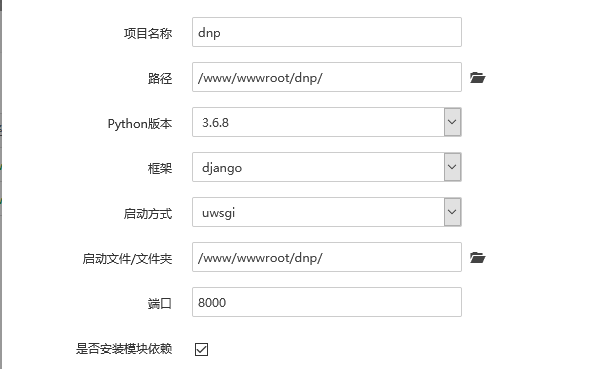django部署
静态文件归集
在setting中配置 #静态文件聚合目录 STATIC_ROOT = os.path.join(BASE_DIR, 'collect_static') 执行命令 python manage.py collectstatic
uwsgi
#安装 pip install uwsgi #创建软连接 ln -s /usr/local/python3/bin/uwsgi /usr/bin/uwsgi
配置文件uwsgi.ini
[uwsgi] master = true processes = 1 threads = 2 chdir = /www/wwwroot/CRM/ http = 0.0.0.0:8001 logto = /www/wwwroot/CRM//logs/error.log chmod-socket = 660 vacuum = true master = true max-requests = 1000
操作
uwsgi --ini uwsgi.ini # 启动 uwsgi --reload uwsgi.pid # 重启 uwsgi --stop uwsgi.pid # 关闭
部署步骤
1.归集静态文件
#静态文件聚合目录 STATIC_ROOT = os.path.join(BASE_DIR, 'collect_static') 执行命令 python manage.py collectstatic
2.在setting配置允许访问
ALLOWED_HOSTS = ['*']
3.导出所有扩展包
#在虚拟环境中执行 pip freeze >requirements.txt
4.上传到服务器
使用git
5.配置websocket

6.配置http以及静态资源访问
nginx配置
#静态资源 location /static/ { alias /www/wwwroot/dnp/collect_static/; }
7.释放阿里云端口,以及其他必要端口,例如面板
8.对版本限制报错,采取升级或者注释环境报错
参考 宝塔部署